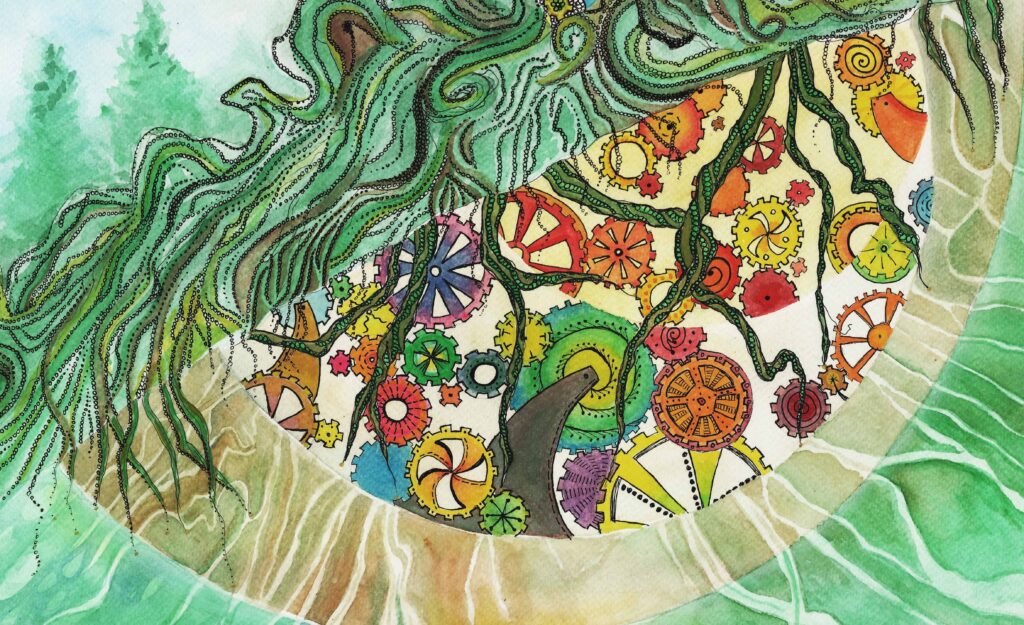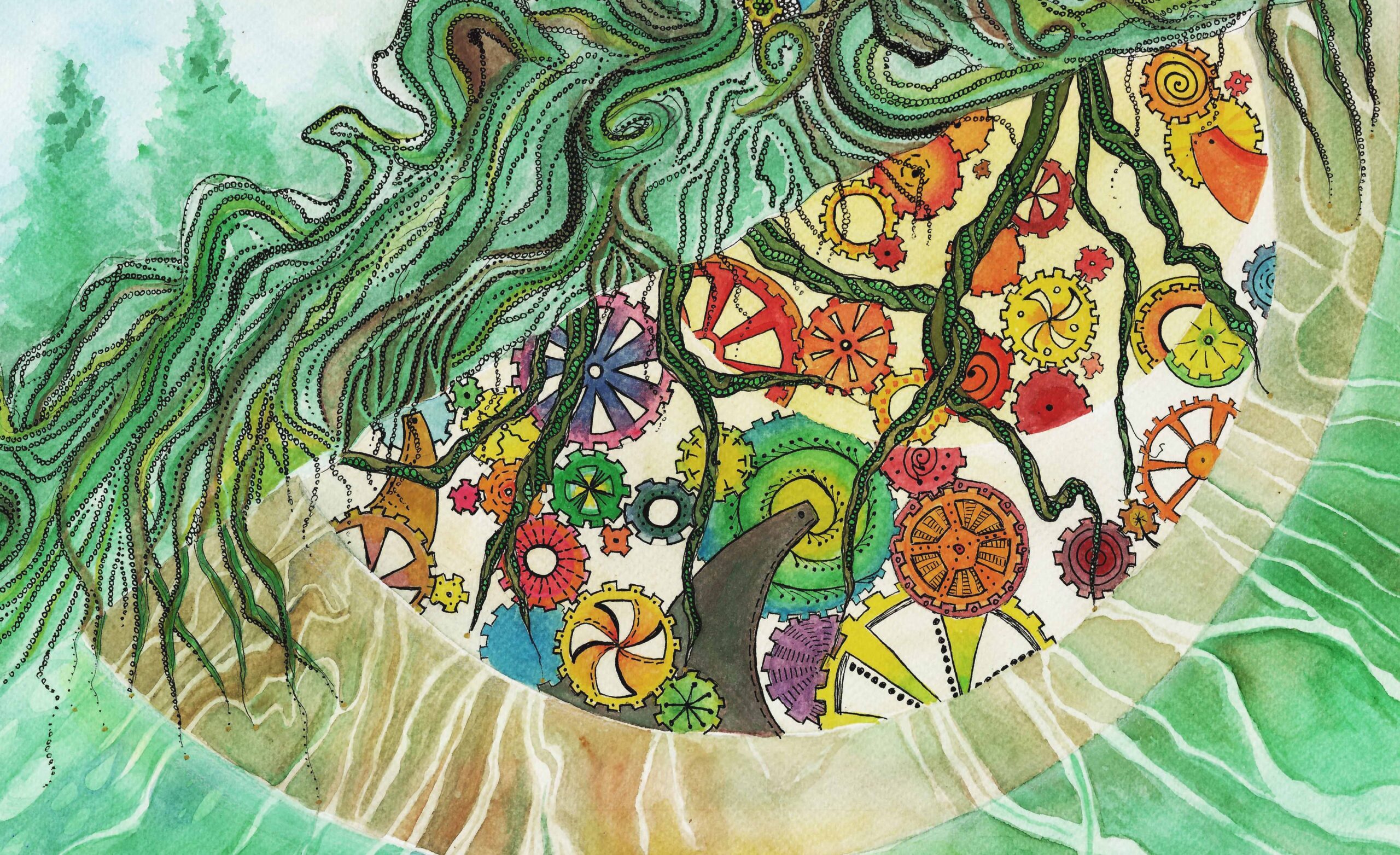
Stuck in Overwhelm
June 30, 2025
SmartBody SmartMind Part 2
August 24, 2025In my last post, I started looking at the change of mindset I needed as I began my healing journey. This post gets into the specific skills, which served to change my relationship with my body and my pain.
In reality, it took hitting a very low point for me to acknowledge that my traumatic accidents from my distant past (33 and 26 years ago) were still impacting my body and mind (or bodymind as many people refer to our unified system!). I thought that since I recovered miraculously – even better than the doctor expected – that I was over it. But the roots of trauma run deep, and I had to learn to work on them in a gentle way. Before I started to understand, I just soldiered on, like a good Christian girl – pushing through the pain, ignoring the stress, not giving in to those bodily warning signals. Overcoming for so long took a toll, and, without me knowing it, survival stress resulted in chronic muscle tension patterns, which erupted in frequent migraines and thumping and pulsating knots throughout my body. I could not get away from the tension. Those symptoms don’t make it easy to sleep, and I was starting to rely on sleep aids more and more. I felt like a brittle potato chip! Any small amount of pressure and I would crack and fall apart.
Learning about the effects of trauma provided a solid step forward for me. Upon the recommendations of a friend, I started watching free videos by Irene Lyon. Relevant learning piques our curiosity and I “saw” myself in her videos. Understanding that I was not alone in my overwhelming symptoms brought hope. Immobilized by tension and pain, barely able to walk across our living room, and, having no other idea of what to do, I signed up for her 3-month class and threw myself into learning about trauma and what it was doing to my body. The audio files she provided taught me to actually be in my body in a positive way (embodiment). In this and the next post, I’ll try to put words around the changes that took place in me through the SmartBody SmartMind (SBSM) class. Some of what I’ll describe will sound strange but bear with me. Maybe just a small part of what I share will be a starting point for someone on their own journey out of being stuck in pain.
In SBSM, I learned to:
- Be in the present moment. This started with very basic grounding or being present. This included learning to observe my breath without changing it. I practiced orienting to my body and surroundings. These practices calm the autonomic nervous system. This practice comes first and is foundational. If I could tell anyone the most helpful thing for me, it would be learning to stay calm, grounded, and pay attention to my breath. Now, I pause often through each day just to feel my bottom on the chair and let my breath flow freely. Ahhhhhhhh…..! I know you might be skeptical, but this becomes a lifelong joy.
- Get rid of the idea of exercise, getting stronger, or accomplishing things with my body as the only path of healing. Healing from trauma does not come from exercising more. We are trained to believe that we can exercise a little today, a little more tomorrow, and before long, we will be healthy and athletic again. This does not work for chronic pain. Relaxing the body provides a whole different mindset, one very important for traumatized bodies that incessantly hold onto tension. Relaxing feels like wasting time, but it’s exactly what the body needs, rather than more physical activity. In a way, this is very similar to how silent time spent with God can feel like a waste until you really get it. As I move forward, this physical relaxation becomes part of my silence and stillness. For more on this idea, see this blog post – Shutdown to Stillness.
- Move my physical awareness away from my painful sensations. Consciously controlling our awareness and going in and out of the pain means we are not trapped in the pain. This literally means focusing our mental attention on a painful spot, being curious and not really trying to change it about it, and then moving awareness to a neutral place in the body – such as the fingertips or wrist. After some time noticing neutral or pleasant sensations, shifting the focus back to the painful spot. Curiosity about the pain helps disfuse fear. At first, I could only draw my attention away from my pain for a few seconds, but that was a start, and it felt good! When we are upset or in pain our conscious awareness frantically darts all over our body. Our frantic thoughts (often some of the mental loops I talked about in my last post) make the pain grow, but shifting attention helps us stay calm. This is a superpower!
- Titrate traumatic memories and pain. Dealing with memories cannot be done all at once without overwhelming the system and retraumatizing it. The emotional response of our bodies when remembering very painful experiences can be as stressful to the body as the actual expeirence was. We aren’t just remembering…we are re-experiencing. Titrating memories and feelings mean facing them bit by bit, drip by drip. We can’t handle processing all of our trauma at once. Having a journeying mindset proves much more helpful that having the goal of “getting back to normal.”
- How to handle when memories and emotions surface. I learned to feel the physical sensation of emotions and not be afraid of them. They pass through our body, and we learn to observe them, knowing that the unpleasant sensation connected to the memory won’t last forever. We can do this when we have learned to feel safe in the present moment (grounded) because we can mentally tell ourselves that though the emotion feels so strong and dangerous, we are actually safe. What we are remembering is not actually happening.
- Change my relationship with my pain. Moving from self-condemning frustration and fear to compassionate curiosity. Now I rarely push through my pain. I listen to it. I do what I need to do for my body instead of ignoring my needs. Along with this, emotionally and spiritually, I had to learn to not resent my body’s needs, but to see them as the path God has put before me, with the possibility of each step being a place of intimacy.
Stay tuned! In a few weeks, I’ll continue this list of ways that I have changed how I think and live in order to not be stuck in my pain. Please feel free to ask questions about any of these elements. I could write a whole blog post about each one as they have all been so important. I would also love to hear how you use any of these practices and how they have helped with your life. Let’s grow in understanding the mechanics of healing the trauma root system together!




4 Comments
I can see the difference in you! So glad you are sharing with others. So many of have aches and pains (chronic or not chronic) that can be helped but using these techniques. Linda Banks
Thanks, Mom. So many of these things need to become lifestyle changes – not just things that you try to remember to do. That switch has made a difference.
I sure feel different!
“I have just soldiered “ on like the farmers daughter, the wife, the mom, the grandma, sister, etc. hiding, and hiding, trying this and trying that, ignoring the pain and tension. My body a painful “ Frozen Charlotte,” with messed up digestion and lots of health issues.
Now as I lay here with ice on painful pulled muscles reading this Sarah , trying to heal many compression fractures walking with a walker, wearing back braces, I can’t hide the contracted mess I am. I can’t hide any of it!
But I am learning a Bigger God and so much about who I am REALY. Lots of watching Katherine Wolf, “Hope Heals.” ministry, and time I’ve not taken with the Lord and His word, but this post can help me in a different way I saved it to my email so I can print it out. I know none of this learning was easy or quick, and is on going but thank you so much for sharing this! Prayers for you! Not an accident I ended up reading this today from a post on FB of your mom’s
Bonnie – thanks for chiming in here. Sorry it took me so long to respond – I didn’t log into my admin account and see this. But I can see that you really get what I’m talking about. In so many ways, it is easier to press on ignoring our bodies…until we just can’t anymore. Just as our bodies contract and tighten in response to all the pain, our bodies can also learn to relax. You know this from all the somatic stuff. In the early days – I was learning from you! I pray that God gently leads you in these days. We are all in this together!